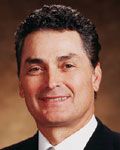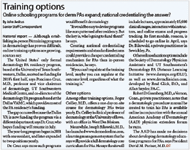- Case-Based Roundtable
- General Dermatology
- Eczema
- Chronic Hand Eczema
- Alopecia
- Aesthetics
- Vitiligo
- COVID-19
- Actinic Keratosis
- Precision Medicine and Biologics
- Rare Disease
- Wound Care
- Rosacea
- Psoriasis
- Psoriatic Arthritis
- Atopic Dermatitis
- Melasma
- NP and PA
- Skin Cancer
- Hidradenitis Suppurativa
- Drug Watch
- Pigmentary Disorders
- Acne
- Pediatric Dermatology
- Practice Management
- Prurigo Nodularis
- Buy-and-Bill
Article
Dermatology PA caseloads, knowledge base grow
A recent study that ranks dermatology among the most satisfying medical specialties to practice finds agreement among dermatologists, who count the specialty's diversity, flexibility and visual nature among its charms.

Key Points
EDITOR'S NOTE: Physician assistants can help you to expand your practice, in any number of ways. But what kind of training do they receive? In this issue, Dermatology Times looks at some of the ways dermatologists employ their PAs, and the rising level of responsibility granted to these practitioners. We also examine the wide variance in training, including online and on-site programs that may bring a measure of standardization to the field.
National report - There are virtually as many ways to use physician assistants in a dermatology practice as there are dermatologists - and that makes standardizing their training difficult but necessary, experts say.
Of some 80,000 PAs practicing in the United States, an estimated 2,300 work with dermatologists, and see an average of about 125 patients a week, according to the Society of Dermatology PAs (SDPA). But training varies widely - creating potential problems.

For example, he says solo practitioners (who comprise nearly 60 percent of U.S. dermatologists) perhaps will have limited exposure to more serious dermatologic problems and the full range of things a PA may need to know.
Joseph Bikowski, M.D., a private practitioner in Sewickley, Pa., says some dermatologists train their PAs for one year before letting them see patients on their own; others train PAs for two months.
"So the PA has no basic core curriculum or education in medical dermatology," he says, and must seek future educational opportunities elsewhere.
Standardization

He is a Vernon, Conn., private practitioner whose practice includes three dermatologists and two PAs. But not every dermatologist shares his view.

If a physician doing only Mohs surgery uses a PA to help with wound closures and postoperative care, he says, "What's the point of having that PA go through a whole dermatology program that includes the care of acne, eczema and psoriasis?"







